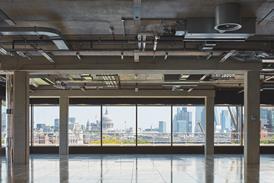- News

All the latest updates on building safety reformRegulations latest
- Focus
- Home
- News
- Focus
- Comment
- Events
- CPD
- Building the Future
- Jobs
- Data
- Subscribe
- Building Boardroom
Why the government is looking to the Thames Tideway project for ways to fund £14.2bn Sizewell C
By Joey Gardiner2025-06-18T06:00:00

The private financing model known as RAB is to be used to raise cash for the new nuclear power station, reservoirs and the Lower Thames Crossing. Joey Gardiner looks at lessons learnt on the Thames Tideway project to find out why RAB is now all the rage
Last week energy secretary Ed Miliband promised a “golden age” for nuclear power as the government confirmed it is pushing ahead with the £14.2bn Sizewell C project in Suffolk.
It has done this despite investor interest in building nuclear in the UK having nosedived in the wake of EDF’s 2016 deal to build Hinkley Point C.
That scheme is now massively over budget on construction – EDF has said it will cost almost £47bn (in current prices) compared to the £10bn the firm said it would cost in 2010. While the £92.50 “strike price” deal with the government – a guarantee to buy energy at a certain price – has protected bill payers to an extent from these cost rises, it also ensured a big risk premium was priced into the job from the start, making nuclear power expensive, with the National Audit Office saying a risk-sharing approach could have been cheaper. The deal “locked consumers into a risky and expensive project with uncertain strategic and economic benefits,” the NAO said.
Already registered? Login here
To continue enjoying Building.co.uk, sign up for free guest access
Existing subscriber? LOGIN
Stay at the forefront of thought leadership with news and analysis from award-winning journalists. Enjoy company features, CEO interviews, architectural reviews, technical project know-how and the latest innovations.
- Limited access to building.co.uk
- Breaking industry news as it happens
- Breaking, daily and weekly e-newsletters
Get your free guest access SIGN UP TODAY

Subscribe now for unlimited access
Subscribe to Building today and you will benefit from:
- Unlimited access to all stories including expert analysis and comment from industry leaders
- Our league tables, cost models and economics data
- Our online archive of over 10,000 articles
- Building magazine digital editions
- Building magazine print editions
- Printed/digital supplements
Subscribe now for unlimited access.
View our subscription options and join our community


















